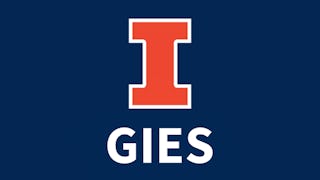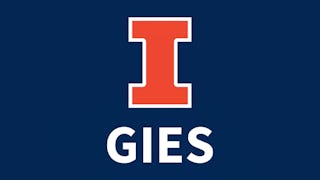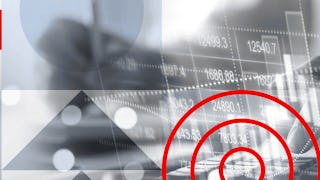This is part of a two-class sequence on financial accounting. FINANCIAL ACCOUNTING I & II, held consecutively, will provide you with a strong foundation to tackle many financial issues. Accounting I covers the basics, while Accounting II deals with more advanced topics. The topics discussed are “general” and apply to accounting practices worldwide – whether in the USA, Europe, Asia, etc. You can take Accounting I on a standalone basis, or, you can take it as part of a two course sequence.


您将学到什么
Master the mechanics of financial accounting.
Understand the structure, functions, and interrelation of the basic financial statements (balance sheet, income statement, and cash flow statement).
Be able to perform a structured fundamental analysis of the financial statements to assess a firm’s profitability, liquidity, and solvency.
Be familiar with the accounting rules governing the recognition and measurement of key activities, events and transactions.
您将获得的技能
要了解的详细信息

添加到您的领英档案
27 项作业
了解顶级公司的员工如何掌握热门技能

该课程共有7个模块
Why learn accounting? Because it is an integral part of finance, one of the most sought after and highly paid professions across the world. Financial literacy is extremely valuable from a personal and professional point of view, irrespective of what type of job you are doing.
涵盖的内容
1个视频3篇阅读材料
The balance sheet is a THE fundamental financial statement, and learning it is essential when studying accounting. This is a big and complex topic, hence we break it down into two sessions. The learning objectives of this module are: Understand the foundation of double-entry accounting; Understand the accounting equation, Assets = Liabilities + Equity; Understand that every transaction in a company affects at least two accounts and the balance sheet remains balanced; Understand how accountants ensure that financial records are accurate and transactions are properly recorded; Get a snapshot of a company’s financial position; Understanding financial health, by knowing what the company owns (assets), what it owes (liabilities), and what remains to the owners (equity); Understand how to assess liquidity and solvency; Look at current assets (like cash and receivables) and current liabilities, and assess a company’s ability to meet short-term obligations; Understand solvency, by comparing total liabilities to total assets, and evaluate a company's ability to meet long-term debts; Understand how much of a company’s assets are financed by owners, and understand capital structure.
涵盖的内容
1个视频2篇阅读材料4个作业
This is a continuation of Module 1, we go deeper into the details, and we do a lot of practice to solidify our learning. The objectives remain the same as that of Part 1: Understand the foundation of double-entry accounting; Understand the accounting equation, Assets = Liabilities + Equity; Understand that every transaction in a company affects at least two accounts and the balance sheet remains balanced; Understand how accountants ensure that financial records are accurate and transactions are properly recorded; Get a snapshot of a company’s financial position; Understanding financial health, by knowing what the company owns (assets), what it owes (liabilities), and what remains to the owners (equity); Understand how to assess liquidity and solvency; Look at current assets (like cash and receivables) and current liabilities, and assess a company’s ability to meet short-term obligations; Understand solvency, by comparing total liabilities to total assets, and evaluate a company's ability to meet long-term debts; Understand how much of a company’s assets are financed by owners, and understand capital structure.
涵盖的内容
1个视频1篇阅读材料5个作业
The income statement helps us understand performance, which probably is what most people care about the most. This is again a big and complex topic, hence we break it down into two sessions. The learning objectives of this module are: Understand how to measures profitability; Learn to differentiate between revenues vs. expenses vs. profits; Understand bottom line / net income, a key indicator of financial performance; Evaluate the success of the company’s operations; Evaluate operational efficiency, and how a company generates profit from its core operations; Help identify areas where costs can be reduced or revenues can be increased; Understand the components of performance: gross margins, administrative expenses, R&D and marketing, interest expense to bankers, and taxes; Understand how the income statement / company performance affects the balance sheet through equity; Understand the relation between profits and dividends; Understand that concept of accrual accounting: performance and cash flows are not necessarily the same thing.
涵盖的内容
2个视频2篇阅读材料4个作业
This is a continuation of Module 2, we go deeper into the details, and we do a lot of practice to solidify our learning. The objectives remain the same as that of Part 1: Understand how to measures profitability; Learn to differentiate between revenues vs. expenses vs. profits; Understand bottom line / net income, a key indicator of financial performance; Evaluate the success of the company’s operations; Evaluate operational efficiency, and how a company generates profit from its core operations; Help identify areas where costs can be reduced or revenues can be increased; Understand the components of performance: gross margins, administrative expenses, R&D and marketing, interest expense to bankers, and taxes; Understand how the income statement / company performance affects the balance sheet through equity; Understand the relation between profits and dividends; Understand that concept of accrual accounting: performance and cash flows are not necessarily the same thing.
涵盖的内容
2个视频1篇阅读材料5个作业
The cash flow statement helps us understand cash movements. Perhaps you know it since you are a child: Cash is King! This is again a big and complex topic, hence we break it down into two sessions. The learning objectives of this module are: Understand how to track movements in cash, inflows and outflows; Understand how much cash is generated and used; Understand how to manage liquidity; Distinguish between different cash activities: operations, investments, financing; Understand the sustainability of the business: are we self-sufficient? Are we liquid? Understand the difference between profitability and cash flows; Understand that accrual accounting used in the income statement has to be complemented by understanding cash positions; Track how much cash goes into investments, whether tangible or intangible; Track what cash is borrowed from banks, and other lenders; Understand how much cash is paid to shareholders in terms of dividends, and how much cash is raised through stock sales; Understand non-cash adjustments, and reconcile between profits and cash movements; Understand how cash flows from the cash flow statement flow into the balance sheet.
涵盖的内容
2个视频2篇阅读材料4个作业
This is a continuation of Module 3, we go deeper into the details, and we do a lot of practice to solidify our learning. The objectives remain the same as that of Part 1: Understand how to track movements in cash, inflows and outflows; Understand how much cash is generated and used; Understand how to manage liquidity; Distinguish between different cash activities: operations, investments, financing; Understand the sustainability of the business: are we self-sufficient? Are we liquid? Understand the difference between profitability and cash flows; Understand that accrual accounting used in the income statement has to be complemented by understanding cash positions; Track how much cash goes into investments, whether tangible or intangible; Track what cash is borrowed from banks, and other lenders; Understand how much cash is paid to shareholders in terms of dividends, and how much cash is raised through stock sales; Understand non-cash adjustments, and reconcile between profits and cash movements; Understand how cash flows from the cash flow statement flow into the balance sheet.
涵盖的内容
2个视频1篇阅读材料5个作业
位教师

从 Finance 浏览更多内容
 状态:预览
状态:预览University of Lausanne
 状态:免费试用
状态:免费试用University of Illinois Urbana-Champaign
 状态:免费试用
状态:免费试用University of Illinois Urbana-Champaign
 状态:免费试用
状态:免费试用IESE Business School
人们为什么选择 Coursera 来帮助自己实现职业发展




学生评论
272 条评论
- 5 stars
81.38%
- 4 stars
13.50%
- 3 stars
2.91%
- 2 stars
0.36%
- 1 star
1.82%
显示 3/272 个
已于 Apr 8, 2025审阅
Sure! Could you clarify what you'd like a review of? It could be a product, service, book, movie, or anything else. Let me know so I can write a thoughtful review for you!
已于 Aug 21, 2025审阅
I can now talk to external accountants with more confidence and I finally understand well what the numbers on the balance sheet, income statement and cash flow statement mean.
已于 Feb 7, 2025审阅
Very interesting course, highly recommended. The teacher explains very well and clearly.
常见问题
To access the course materials, assignments and to earn a Certificate, you will need to purchase the Certificate experience when you enroll in a course. You can try a Free Trial instead, or apply for Financial Aid. The course may offer 'Full Course, No Certificate' instead. This option lets you see all course materials, submit required assessments, and get a final grade. This also means that you will not be able to purchase a Certificate experience.
When you purchase a Certificate you get access to all course materials, including graded assignments. Upon completing the course, your electronic Certificate will be added to your Accomplishments page - from there, you can print your Certificate or add it to your LinkedIn profile.
Yes. In select learning programs, you can apply for financial aid or a scholarship if you can’t afford the enrollment fee. If fin aid or scholarship is available for your learning program selection, you’ll find a link to apply on the description page.
更多问题
提供助学金,



